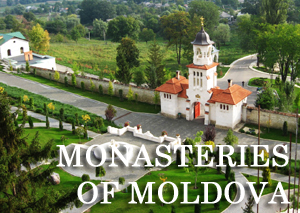
Summary
Paper Religious books in Bessarabia 1812 – 1918 (between tradition and tsarists politics), is dedicated to an actual, but not sufficiently studied theme. The historical explanation was directed to delimitate some significant moments of historical, political, confessional and cultural background that marked the religious book in Bessarabia – it persisted under the sign of struggle: between the tradition and tsarist’s politics. hrough this historical perspective, religious book reflects the specific of spiritual development of Bessarabia as part of Russian Empire, comparing it with other Romanian provinces under foreign domination. Paper consists of Introduction, three chapters divided in ten paragraphs, Conclusion, eighteen annexes and general bibliographical index. The main sources of research are novel documents from State Archive collections of Republic of Moldova (Chişinău) and Ukraine (Odessa).
The establishment of local typography (founded by exarch Gavriil), is viewed as a direct result of political, religious and ecclesiastic changes that occurred after the 1812, and had to serve the spiritual necessities of province according to its own “manners and customs”, while the Synodal Ukaz from 1814, May, 4th (which approved the establishment of typography) especially notified about canonical violation of “manners and customs” in annexed province. The political proselytism was obvious: in new-founded typography, religious books had to be translated into Romanian exclusively after the Russian synodal editions.
Thus, the most stabile social institution – the Church – ought to satisfy the ambitions of some aggressive proselytic practices subordinated to tsarist’s politics. Here was the main danger of assimilation and rusification of bessarabian Romanians: the Russian proselytism was hidden under the mask of religious identity. Historical, philological and linguistic considerations guided us to a conclusion that exarch Gavriil didn’t exactly respect the requirements of Synod from Petersburg and tried to make a compromise between the traditions and the tsarist politics: contents of Liturgier(1815), Molebnic(1816, 1816), Catihisis(1816),Ceasoslov(1817), Psaltire(1817) were mostly translations from Romanian editions, with small additions from the structure of Synodal editions.
Linguistical evidences testify the Moldavian, Transylvanian and Wallachian origins of liturgical texts included in printed works from this period. Metropolitan Bishop Gavriil Banulescu- Bodoni continued this tradition, but the activity of Archbishop Dimitrie Sulima should be reconsidered in this sense: books printed under his cure signify nothing but the interruption of tradition of religious printings. Under the cure of Bishop Pavel Lebedev (1871-1882) the printing of Romanian books was stopped and the Confessional Typography was closed (1883). But the tradition of “moldovenism” in church was very strong, so the bessarabian clergy claimed their right to reopen the typography at the beginning of XXth century.
Through the XIXth century proselytism practices were more subtle and varied: being defeated in struggle with local church traditions in religious book-prints, they tried another way: the substitution of Romanian language from old liturgical books with a local “Moldavian dialect”.The empire’s traditions in printings and book spreading were always upheld by the system of censorship institutions. All books printed in Chişinău can be divided in 2 categories: first category includes “reproductions” mixed with synodal editions which were under the chiriarch supervision; second category includes “new translations and compositions” which were obligatory approved by synodal censorship, what was notified in the contents of these books.
Although the system of restrictive interdictions was sufficiently drastic, the printed books from diverse zones of Romanian printing – Iaşi, Bucureşti, Râmnic, Buda, Buzău, etc penetrated in Bessarabia during the XIXth century, in commanding number, but never sufficient to cover the necessities of local churches. Imperial politics in field of book spreading and printing aimed at restructuration of book funds composition in parochial library by gradually completion with Russian books. The richest collections of Romanian books in XIXth century Bessarabia were that of monastery library. In this aspect, the book collection of Hârjauca monastery is representative: Romanian books of library were gradually reduced by foreign (Russian) books: to the end of XIXth century Romanian books constituted only 3,1 % comparing to Russian ones. Important collections of Romanian books are identified in library of Church’s Historical-Archeological Society from Bessarabia (1904): 240 (296 titles) volumes (XVII-XIX c.) and 18 manuscripts (XIV-XIX c.).
Our final conclusion is that the religious books printed in Bessarabia in the period of Russian domination (1812-1918), persisted under the sign of permanent struggle: between tradition and tsarist’s politic. In spite of restrictions imposed by the synodal censorship, religious books printed in Confessional Typography of Bessarabia continued the traditions of Romanian Church.
Confessional Typography of Bessarabia was the only cultural (ecclesiastic) institution legalized by the imperial administration of province (1814 – 1918) that continued its mission through printings in Romanian language, and thus contributed to spreading of religious books in all Bessarabia and to consolidation of linguistic unity of Romanian language.
http://www.documentar-ortodox.blogspot.com/
 Memorial house of romanian elder Sofian Boghiu Consecrated in his native Village
Memorial house of romanian elder Sofian Boghiu Consecrated in his native Village  On the 14th Sunday after Pentecost, His Eminence Metropolitan Vladimir celebrated the Divine Liturgy in the St. Nicolas Monastery, Dobrusa village, Soldanesti region
On the 14th Sunday after Pentecost, His Eminence Metropolitan Vladimir celebrated the Divine Liturgy in the St. Nicolas Monastery, Dobrusa village, Soldanesti region  Inauguration of the volume of articles presented at the National Scientific Conference “The Orthodox Church and the State: Faith and Knowledge”
Inauguration of the volume of articles presented at the National Scientific Conference “The Orthodox Church and the State: Faith and Knowledge”  The 12th Sunday after Pentecost – kindness in God changes the world we live in
The 12th Sunday after Pentecost – kindness in God changes the world we live in  The 11th Sunday after Pentecost – loving our God and our neighbor
The 11th Sunday after Pentecost – loving our God and our neighbor  The Transfiguration of the Lord, celebrated in the Nativity of the Lord Cathedral in Chisinau
The Transfiguration of the Lord, celebrated in the Nativity of the Lord Cathedral in Chisinau  His Eminence Metropolitan Vladimir celebrates 65th anniversary
His Eminence Metropolitan Vladimir celebrates 65th anniversary  Divine Service at the St. Theodore of Tyre Monastery (Ciuflea) in Chisinau, and congratulation of Archimandrite Nicolae (Rosca), the Monastery’s confessor-administrator, on the 50th anniversary.
Divine Service at the St. Theodore of Tyre Monastery (Ciuflea) in Chisinau, and congratulation of Archimandrite Nicolae (Rosca), the Monastery’s confessor-administrator, on the 50th anniversary.  The Tenth Sunday after Pentecost: Divine Liturgy in the Nativity of the Lord Cathedral in Chisinau
The Tenth Sunday after Pentecost: Divine Liturgy in the Nativity of the Lord Cathedral in Chisinau 


